Pope Paul VI's visit to India for the 38th International Eucharistic Congress in Mumbai in 1964 will be relived with a photo walk-through and exhibition. Fiona Fernandez goes behind the scenes...
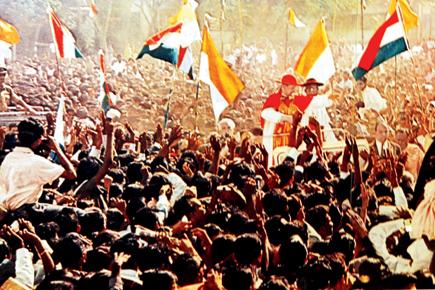
Mumbai Guide, Pope Paul VI, 38th International Eucharistic Congress, 1964 visit, photo walk-through, exhibition
“If it pleases the Lord,
I come to India...and I come.”
The Pope did come.
These were Pope Paul VI’s words to His Eminence Cardinal Valerian Gracias on the night of September 30, 1964 expressing his keenness to visit India.
ADVERTISEMENT
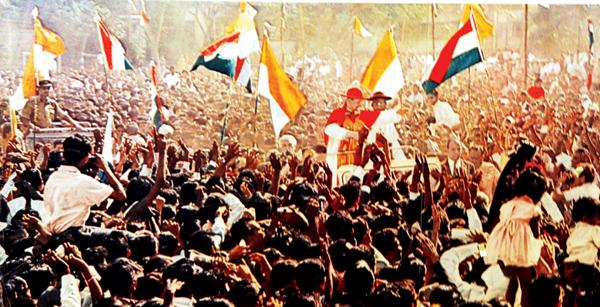
Millions lined Mumbai’s roads to greet the Pope as they waved flags of India and the Vatican. Seen here is Pope Paul VI with Cardinal Valerian Gracias in a ‘pope-mobile’ customised by Mahindra & Mahindra. It became the prototype design for the vehicle used by all Popes. It was also possibly the first time when a Pope used an open vehicle with full access to the crowds.
50 years later, we are at the Catholic Communication Centre at Archbishop’s House, Colaba. Strains of a popular Coldplay track waft in the background as we get a pulse on an onerous task at hand; it’s less than a month before a photo exhibition opens to the public; this will be the centrepiece around many events planned by Mumbai’s Catholic Church to celebrate the golden jubilee of the 38th International Eucharistic Congress.

“I wanted to bring something that was precious to me,” said the Pope when he gifted a chalice to India. He also presented a cheque of $50,000 dollars to President S Radhakrishnan, since India was facing a severe food crisis at the time. Pics of exhibition/Nimesh Dave
Father Warner D’Souza, in charge of the Museum of Christian Art in Goregaon, and the chief-de-mission for this exercise, seems to be on autopilot. He juggles between checking facts meant to appear on the standees at the exhibition, ensures that a fellow priest gets back-up while photographing souvenirs (for display at the exhibition) and takes me through the archives that served as research for this exhibition. “Every aspect has been created in-house — from the planning to execution,” he elaborates.

Father Warner D'Souza
“Last year, I wrote to the Cardinal expressing a desire to celebrate this great event. The idea was approved this year in March, and soon, research work had begun in full swing,” he says. With a core team of five teenagers, the priest reminds me throughout our chat of the huge role played by the youth in this Herculean project.
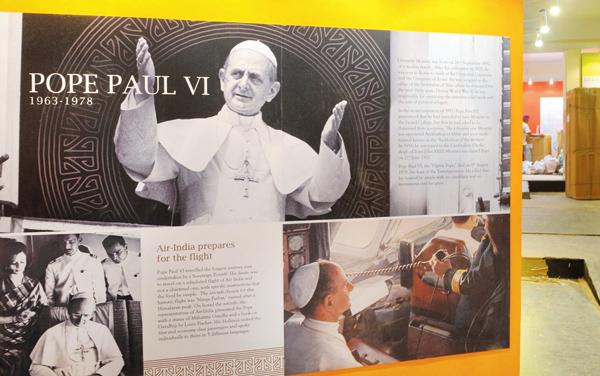
Research included hundreds of man-hours, poring over books and memorabilia from the Archbishop’s House
A week ago, the buzz shifts from south Mumbai to Bandra’s St Joseph’s Convent School, the venue for the exhibition. Artefacts, photographs and display cases are being allotted their space inside the school hall as a committee of mostly young folk is taking instructions from Father Warner, with D-Day approaching. I spot a shade card with bright colours to represent the eight sections of the photo walk-through; “We want to draw in younger people, to tell them how this event impacted India’s image.
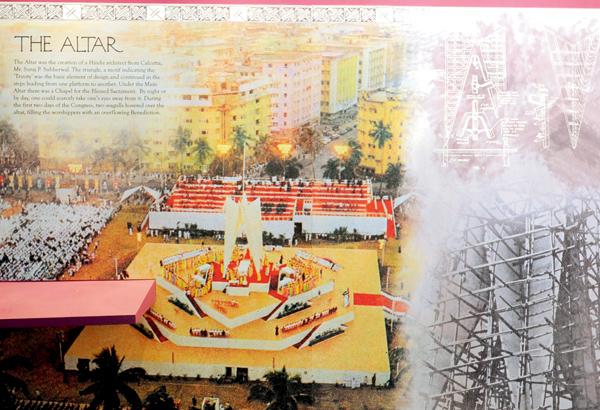
Kolkata architect Suraj P Subherwal designed the main altar at Oval Maidan that rose to nearly five and a half storeys
The Economist had written how this Congress did more good by presenting India as a secular country compared to all the work that its pundits in the External Affairs Ministry could have done! It’s telling a story of a great relationship where the State and Church worked with mutual respect.”
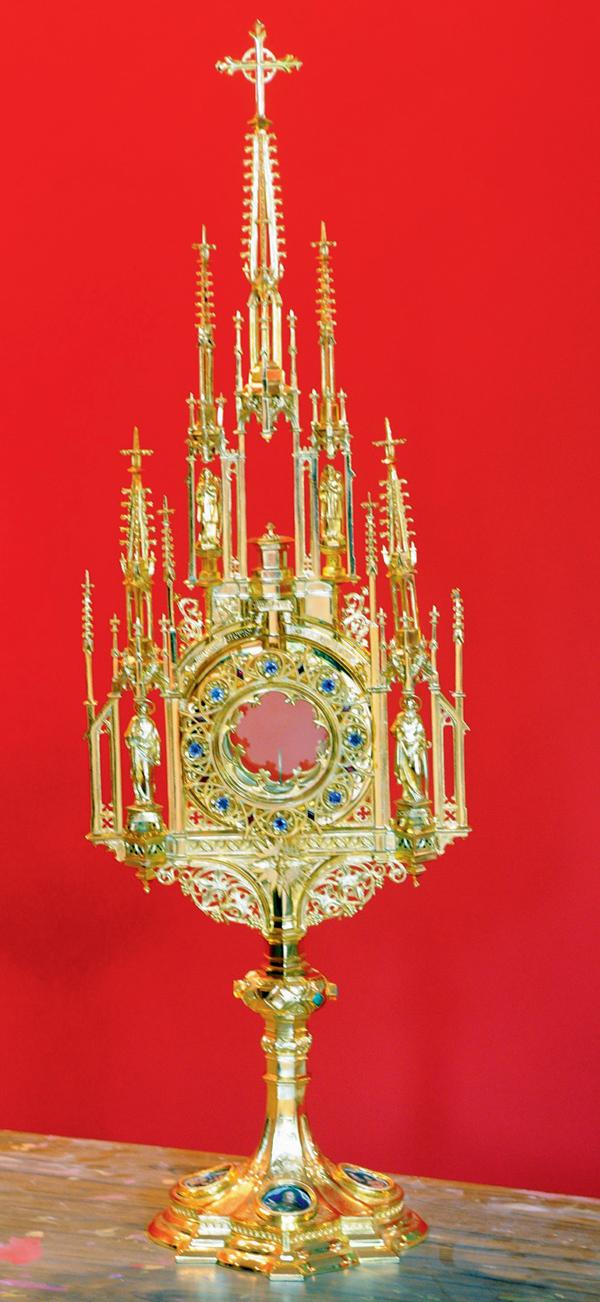
Artefacts like this monstrance (where the Blessed Sacrament is placed) will be on display — this was gifted by Mazagaon’s Church of St Anne
He spells out how despite the Pope not being in the country for a state visit, the who’s-who of Indian politics — President S Radhakrishnan, Vice-President Dr Zakir Hussain, Prime Minister Lal Bahadur Shastri, Indira Gandhi, State Governor Dr PV Cherian and Chief Minister VP Naik spent time with Pope Paul VI while he was in Mumbai in December 1964.
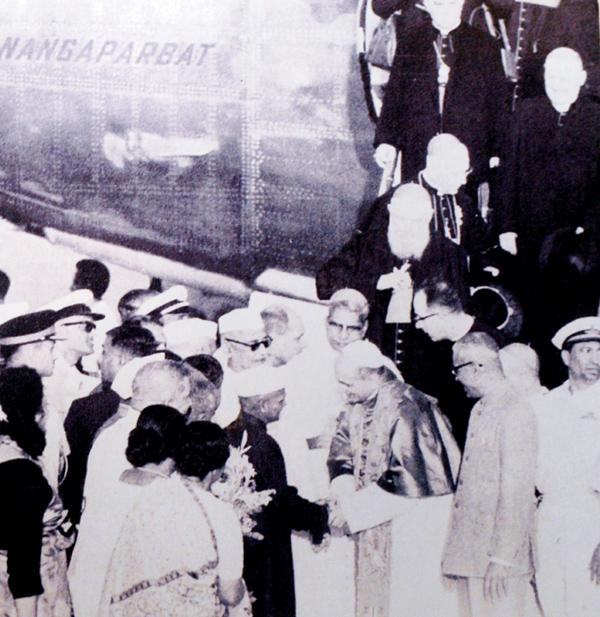
The Pope was greeted at the Santacruz airport by Vice President Dr Zakir Hussain, Prime Minister Lal Bahadur Shastri, Maharashtra Governor Dr PV Cherian, Chief Minister VP Naik, Indira Gandhi and Vijayalakshmi Pandit.
“It was a matter of immense pride to see the integration of all faiths as part of this trip — be it the organising committees for the entire papal visit, the state and civic authorities, the police — all the machinery were in sync to ensure a glitch-free event. Mumbai’s Cardinal Valerian was a pillar of vision through it all,” adds Father Warner.
Despite criticism of not being able to pull it off (since the Pope’s visit was announced in India only on October 18, 1964), he countered the odds. “The international clergy was amazed at the efficiency; it made Page 1 headlines across the globe. It indeed was India’s finest hour in 1964,” summarises Father Warner as he heads back to the bustle of where the action is.
 Subscribe today by clicking the link and stay updated with the latest news!" Click here!
Subscribe today by clicking the link and stay updated with the latest news!" Click here!






